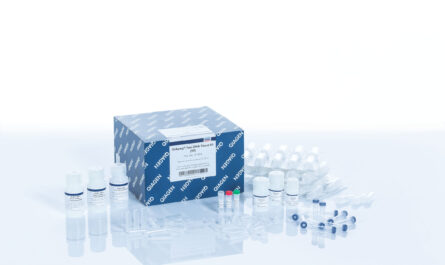Sieve shakers help efficiently separate particulate matter based on size into uniform size fractions for further testing and evaluation. In this article, we will understand the working, features and applications of sieve shakers along with some latest technological developments in this field.
Construction and Working
A basic sieve shaker consists of a collection of sieves with different mesh sizes stacked in descending order. The uppermost sieve has the largest pore size and the bottom sieve has the smallest. Particulate sample is placed on the top sieve and the whole stack is clamped securely. The sieve shaker unit holds the sieve stack and provides controlled shaking motion.
Modern shakers use either an eccentric shaft or vibrating mechanism to impart precise vertical or horizontal shaking motion to the sieves. During operation, the sample particles are agitated vigorously which causes them to percolate down through the sieve stack. Larger particles are retained on top sieves while finer particles pass through to lower sieves. After completion, each sieve fraction can be collected separately for weighing and analysis.
Key Features
Most Laboratory Sieve Shakers come with features like adjustable timer and amplitude controls. Timers can be set between 1 to 60 minutes while amplitude selection ensures optimum sieving for different materials. Stack holders accommodate sieve stacks of varying height up to 12-15 sieves. Back-purge ports and dust covers minimize contamination. Models comply with ISO, ASTM, BS standards for particle sizing applications.
Touch screens and PROGRAM modes on advanced shakers provide one-touch operation and storage of customized methods. Units have safety interlocks, overload protection and operate on 220V power. Models are available for batch as well as continuous particle separation processes. Overall, features provide flexibility, precise process control and compliance with industry testing standards.
Applications in Industries
Sieve shakers find wide usage across many industries for following key applications:
– Mining: Sieving of coal, ores, aggregates to divide into commercial size fractions for processing.
– Construction: Analysis of sand, gravel and crushed stone used in concrete, asphalt, tar etc. Sieves ensure consistent gradation of materials.
– Chemicals: Determining particle size distributions of pigments, catalysts, ceramics and other chemicals & intermediates.
– Pharmaceuticals: Critical testing of active drug substances and excipients to comply with tight specifications.
– Food processing: Sorting of flours, coffee beans, cereals and other commodities based on size grades.
– Others: Ceramics, glass making, paints, plastics and various laboratory R&D related analyses.
Technological Advancements
Vibratory sieve shakers capable of linear as well as circular orbital shaking motion have now become popular over traditional circular shakers. Orbital shaking delivers better particle separation efficiency with less chances of blinding and tearing of screens. Digital versions allow automated control of time, amplitude and eccentric mass with data logging features.
Some innovative shakers feature dual-motion technology using both circular and orbital movements in sequence. They are found to be 20-40% more productive than single-mode shakers. Touchscreen controls on advanced models provide graphing, statistical analysis and connectivity options like USB data export. Industry 4.0 ready models integrate with laboratory automation platforms for Industry Internet of Things (IIoT) applications.
Upgraded models incorporate load cells to monitor screen weight throughout operation. Such “online” weighing helps create sieve curves in real-time without stopping the process. Digital imaging sieve monitoring systems capture high-definition images of screen content for particle size evaluation. Advanced systems facilitate remote operational monitoring and datalog access over networks. These new technologies are enhancing analytical capabilities and productivity of modern particle sizing labs.
With ever-improving designs, capabilities and networked integration, laboratory sieve shakers will continue modernizing particulate analysis workflows across various sectors. Their precision, reproducibility and ability to generate fast analytical data makes them indispensable tools for R&D, process optimization and quality control applications. With new technologies enabling real-time monitoring and data-driven insights, sieve shakers are poised to leverage Industry 4.0 transformations effectively.
Note:
1. Source: Coherent Market Insights, Public sources, Desk research
2. We have leveraged AI tools to mine information and compile it



